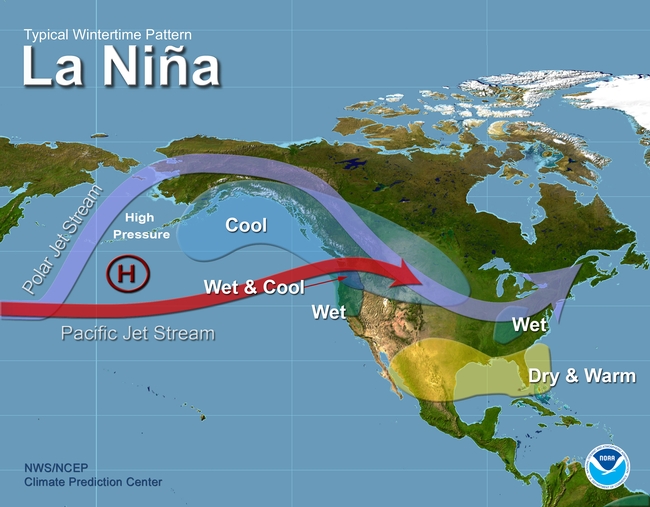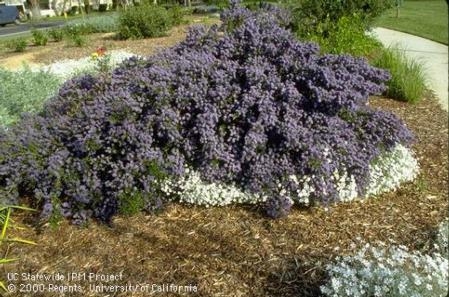Happy New Year from the UC Master Gardeners of Monterey and Santa Cruz Counties!
LaNina Wintertime Pattern. From https://www.pmel.noaa.gov/elnino/what-is-la-nina.
So where does that leave our gardens and landscapes? Dry, dry, dry.
Evergreen plants are often the hardest hit by La Niña because they continue to use water for photosynthesis. Deciduous trees and shrubs require less moisture, but will benefit from some irrigation during periods of little to no rain. Remember, infrequent deep irrigation is better than frequent shallow irrigation. Don't forget to water your container plants as well.
Mulch conserves moisture around landscape plants.
Warmer temperatures sometimes cause shrubs to start putting out leaves early and while there's not much to do about that, be on guard for cold snaps that will freeze tender new growth. Before a freeze, water your plants, as soil moisture and hydrated roots will improve their cold hardiness.
In summary, La Niña has put us back in drought conditions. Unfortunately, we've had a lot of experience with drought here in central California.
For La Niña forecast information, visit the National Weather Service's Climate Prediction Center. For reminders on gardening in a drought, visit the UC California Garden Web. Don't forget to subscribe to our blog so that you receive an email notification when a new post goes up. If you have questions, contact us online, by phone or in person to get answers to your gardening quandaries.

